1. Lee JY, Yun J. What else is needed in the Korean government’s master plan for people with developmental disabilities? J Prev Med Public Health. 2019; 52(3):200–204. PMID:
31163956.

2. Yun J. The necessity of comprehensive service institution for people with autism: Lessons from the North Carolina TEACCH program in United States. Public Health Affairs. 2019; 3(1):147–154.

3. Yun J, Lee JY. Implications for the US Medicaid role expansion for people with autistic spectrum disorder. Glob Soc Secur Rev. 2019; 9:59–67.
4. Lee JY, Yun JE, Jang WM. Barriers to estimation of number of adults with autism spectrum disorders. J Rehab Res. 2019; 23(2):1–14.

5. Yun J, Kim HJ. Trend analysis of medical care utilization among people with autistic spectrum disorder using national health insurance data. J Digit Converg. 2018; 16(11):411–418.
6. Maenner MJ, Shaw KA, Baio J, Washington A, Patrick M, DiRienzo M, EdS1; PhD-7, et al. Prevalence of autism spectrum disorder among children aged 8 years—autism and developmental disabilities monitoring network, 11 sites, United States, 2016. MMWR Surveill Summ. 2020; 69(4):1–12.
7. Autism and Developmental Disabilities Monitoring Network Surveillance Year 2006 Principal Investigators. Centers for Disease Control and Prevention (CDC). Prevalence of autism spectrum disorders - Autism and Developmental Disabilities Monitoring Network, United States, 2006. MMWR Surveill Summ. 2009; 58(10):1–20.
8. Kim YS, Leventhal BL, Koh YJ, Fombonne E, Laska E, Lim EC, et al. Prevalence of autism spectrum disorders in a total population sample. Am J Psychiatry. 2011; 168(9):904–912. PMID:
21558103.

9. Hong M, Lee SM, Park S, Yoon SJ, Kim YE, Oh IH. Prevalence and economic burden of autism spectrum disorder in South Korea using national health insurance data from 2008 to 2015. J Autism Dev Disord. 2020; 50(1):333–339. PMID:
31630294.

10. Yoo HJ. Recent increase in autism and ADHD: true or inflated? J Korean Med Sci. 2013; 28(7):974–975. PMID:
23853476.

12. Hwang YI, Srasuebkul P, Foley KR, Arnold S, Trollor JN. Mortality and cause of death of Australians on the autism spectrum. Autism Res. 2019; 12(5):806–815. PMID:
30802364.

13. Bachmann CJ, Gerste B, Hoffmann F. Diagnoses of autism spectrum disorders in Germany: time trends in administrative prevalence and diagnostic stability. Autism. 2018; 22(3):283–290. PMID:
29671642.

14. Developmental Disabilities Monitoring Network Surveillance Year 2010 Principal Investigators. Centers for Disease Control and Prevention (CDC). Prevalence of autism spectrum disorder among children aged 8 years - autism and developmental disabilities monitoring network, 11 sites, United States, 2010. MMWR Surveill Summ. 2014; 63(2):1–21.
15. Guan J, Li G. Injury mortality in individuals with autism. Am J Public Health. 2017; 107(5):791–793. PMID:
28323463.

16. Özerk K, Cardinal D. Prevalence of autism/ASD among preschool and school-age children in Norway. Contemp Sch Psychol. 2020; 24(4):419–428.

17. Chiarotti F, Venerosi A. Epidemiology of autism spectrum disorders: a review of worldwide prevalence estimates since 2014. Brain Sci. 2020; 10(5):274.

18. Christensen DL, Braun KV, Baio J, Bilder D, Charles J, Constantino JN, et al. Prevalence and characteristics of autism spectrum disorder among children aged 8 years—autism and developmental disabilities monitoring network, 11 sites, United States, 2012. MMWR Surveill Summ. 2018; 65(13):1–23. PMID:
30439868.
19. Ofner M, Coles A, Decou ML, Do MT, Bienek A, Snider J, et al. Autism Spectrum Disorder among Children and Youth in Canada 2018. Ottawa, ON: Public Health Agency of Canada;2018.
20. Schendel DE, Overgaard M, Christensen J, Hjort L, Jørgensen M, Vestergaard M, et al. Association of psychiatric and neurologic comorbidity with mortality among persons with autism spectrum disorder in a Danish population. JAMA Pediatr. 2016; 170(3):243–250. PMID:
26752506.

21. Rah SS, Hong SB, Yoon JY. Prevalence and incidence of developmental disorders in Korea: a nationwide population-based study. J Autism Dev Disord. 2020; 50(12):4504–4511. PMID:
32347466.

22. Shaw KA, Maenner MJ, Baio J, Washington A, Christensen DL, Wiggins LD, et al. EdS1. Early identification of autism spectrum disorder among children aged 4 years—Early Autism and Developmental Disabilities Monitoring Network, six sites, United States, 2016. MMWR Surveill Summ. 2020; 69(3):1–11.
23. Zuckerman KE, Broder-Fingert S, Sheldrick RC. To reduce the average age of autism diagnosis, screen preschoolers in primary care. Autism. 2021; 25(2):593–596. PMID:
33126817.

24. Gillberg C, Billstedt E, Sundh V, Gillberg IC. Mortality in autism: a prospective longitudinal community-based study. J Autism Dev Disord. 2010; 40(3):352–357. PMID:
19838782.

25. Mouridsen SE, Brønnum-Hansen H, Rich B, Isager T. Mortality and causes of death in autism spectrum disorders: an update. Autism. 2008; 12(4):403–414. PMID:
18579647.
26. Woolfenden S, Sarkozy V, Ridley G, Coory M, Williams K. A systematic review of two outcomes in autism spectrum disorder - epilepsy and mortality. Dev Med Child Neurol. 2012; 54(4):306–312. PMID:
22348343.

27. Bilder D, Botts EL, Smith KR, Pimentel R, Farley M, Viskochil J, et al. Excess mortality and causes of death in autism spectrum disorders: a follow up of the 1980s Utah/UCLA autism epidemiologic study. J Autism Dev Disord. 2013; 43(5):1196–1204. PMID:
23008058.

28. Hirvikoski T, Mittendorfer-Rutz E, Boman M, Larsson H, Lichtenstein P, Bölte S. Premature mortality in autism spectrum disorder. Br J Psychiatry. 2016; 208(3):232–238. PMID:
26541693.

29. Durkin MS, Maenner MJ, Meaney FJ, Levy SE, DiGuiseppi C, Nicholas JS, et al. Socioeconomic inequality in the prevalence of autism spectrum disorder: evidence from a U.S. cross-sectional study. PLoS One. 2010; 5(7):e11551. PMID:
20634960.

30. King MD, Bearman PS. Socioeconomic status and the increased prevalence of autism in California. Am Sociol Rev. 2011; 76(2):320–346. PMID:
21547238.

31. Thomas P, Zahorodny W, Peng B, Kim S, Jani N, Halperin W, et al. The association of autism diagnosis with socioeconomic status. Autism. 2012; 16(2):201–213. PMID:
21810908.

32. Kim JW, Kim HW, Moon DS, Lim YS, McDougle CJ, Howe YJ. Comparison of services for autism spectrum disorder in Massachusetts with those in Seoul. J Korean Med Sci. 2019; 34(43):e288. PMID:
31701704.


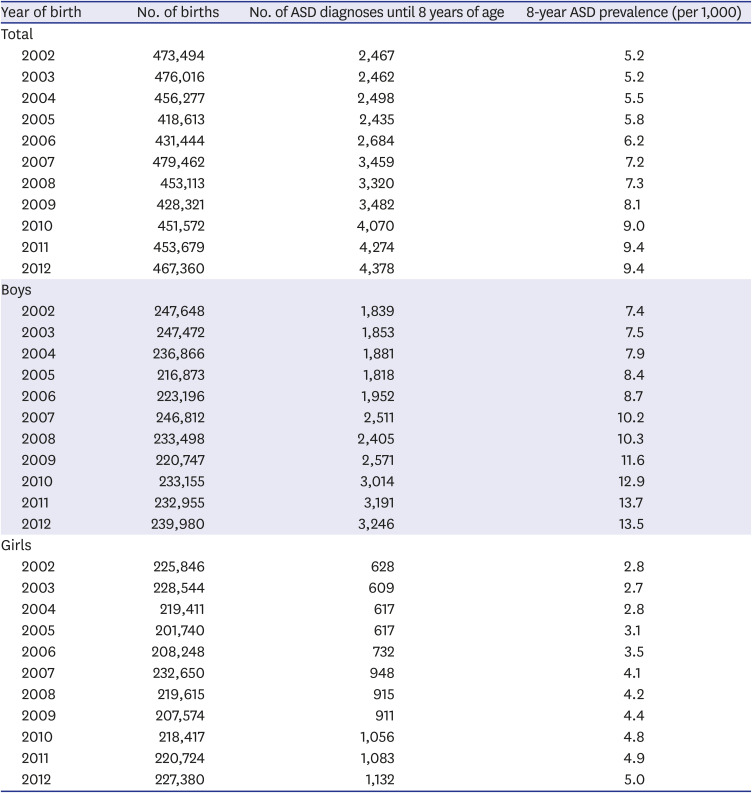
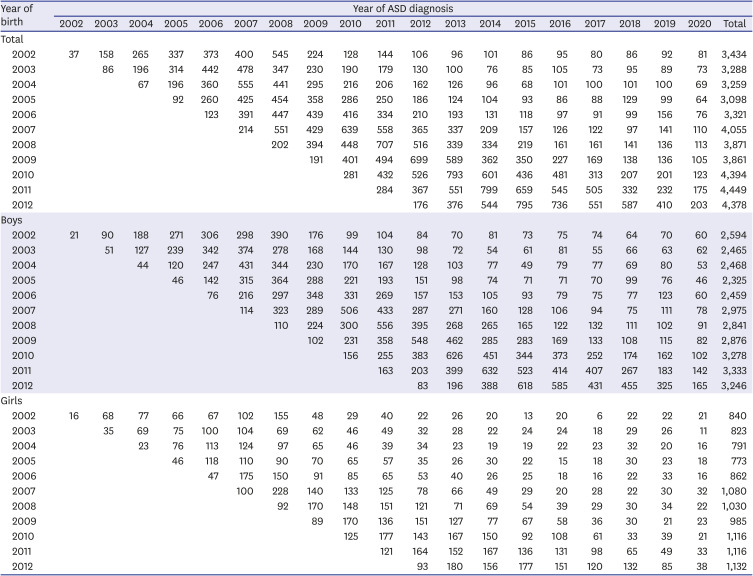
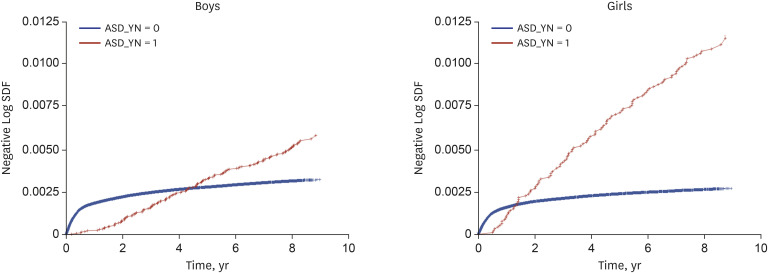
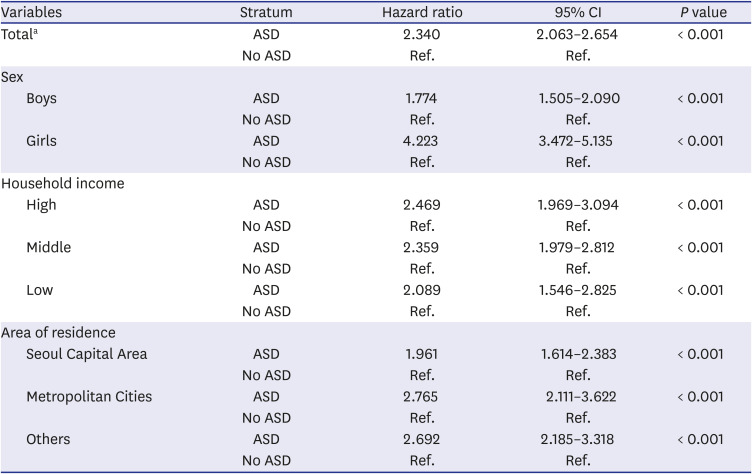




 PDF
PDF Citation
Citation Print
Print



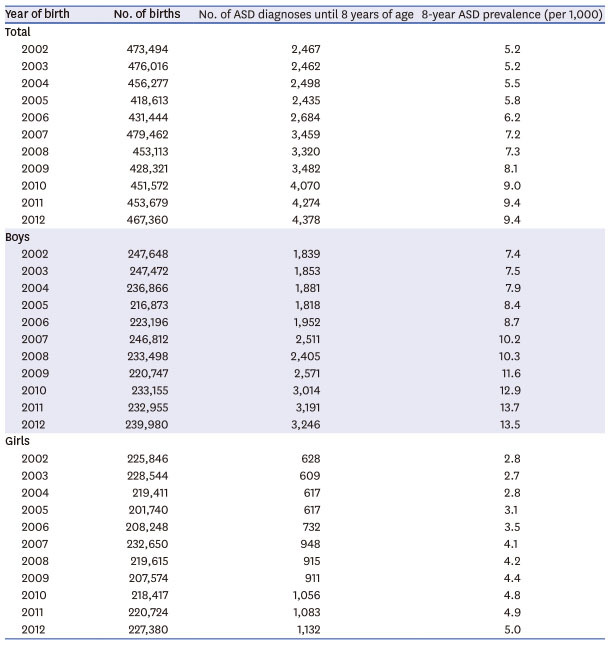
 XML Download
XML Download